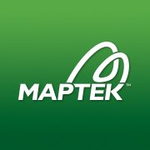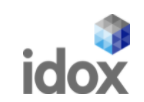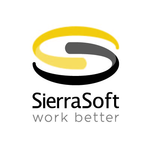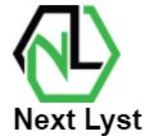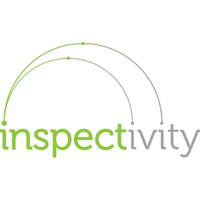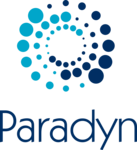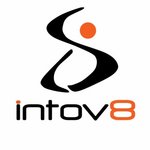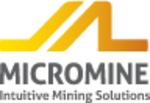Yes, most mining software is accessible from different devices and platforms, as long as they are compatible with the software. This gives miners flexibility and convenience by allowing them to monitor and manage their mining activities from several places and devices. However, before you use the software, make sure it is compatible with your unique devices and platforms.
List of 20 Best Mining Software
Vulcan, a mining software available for both Windows and Web App platforms. Empower your mining operations with advanced features such as 3D geological modeling, production planning, and mine design. Streamline your processes and boost efficiency wit...Read More Vulcan
Felix is solution for vendor management and procurement. It streamlines processes, ensures compliance, and mitigates risks with real-time data, automated data collection, and seamless integration. Gain valuable insights and make smarter procurement d...Read More Felix
Dashpivot is a field management software for industrial companies. Say goodbye to paperwork and hello to increased productivity and reduced paper consumption. With advanced features such as real-time data capture, automated workflows, and effortless...Read More Dashpivot
Propeller Mining - the leading software solution designed specifically for aggregate mining operations. Our advanced features, including cross section creation, pit optimization reporting, and 3D modeling, provide accurate data insights for improved...Read More Propeller Mining
Operations Manager – solution for mine engineering and shift management. Our software is specifically designed to enhance the efficiency and productivity of your mining operations. With features such as data storage and exchange, advanced pit...Read More Operations Manager
iGantt - a software specifically designed for the mining industry. Available for both Windows and web applications, this innovative solution simplifies production scheduling for both underground and open pit operations using activity-based techniques...Read More iGantt
FusionLive, a pioneering project management solution with cutting-edge capabilities including live collaboration and powerful data analysis. Its efficient workflows, precise data handling, and seamless team communication make it a valuable asset for...Read More FusionLive
DecipherGreen, a software designed to empower mining companies in effectively managing environmental impacts, staying compliant with regulations, and driving sustainability initiatives. By promoting responsible resource management and transparent ope...Read More DecipherGreen
SierraSoft Land is a BIM software tailor-made for land restitution, modeling, and analysis. This versatile tool is available for both Windows and Web App users, equipped with advanced features such as volumetric calculations, cross sectional creation...Read More SierraSoft Land
Next Lyst is the software that is reshaping the industry as we know it. Powered by cutting-edge technology, this game-changing software delivers unparalleled solutions that drive remarkable progress. Its advanced features optimize operations, improve...Read More Next Lyst
Mineograph is the premier mining software for optimal efficiency. Our cutting-edge system is specifically designed to minimize costs and enhance productivity. Enjoy a multitude of features including long map generation, personnel tracking, secure dat...Read More Mineograph
Inspectivity is the innovative no-code platform designed to streamline inspection management and ensure compliance across various industries. With its intuitive interface and robust data collection features, Inspectivity boosts productivity and opera...Read More Inspectivity
Surfer, the essential data modeling tool for precise analysis. Experience cross section creation, 3D modeling, and seamless data exchange with efficiency and accuracy. Compatible with both Windows and Web App, this software is a must-have for meticul...Read More Surfer
Paradyn is a versatile software designed to optimize the mining value chain. With compatibility for Web App, Windows, and Macintosh platforms, this solution caters to SMEs, Agencies, Enterprises, and Startups. Packed with advanced features, Paradyn e...Read More Paradyn
Corvus Axiom is a trusted software in the mining industry, offering a wide range of capabilities for mine systems development, business enhancement, and production analysis. From accurate volumetric calculations and secure data exchange to real-time...Read More Corvus Axiom
Reactore, a highly customizable ERP and digitalization platform designed specifically for the mining industry. Our robust software offers comprehensive solutions for Enterprises and Startups, with full compatibility for both Windows and web applicati...Read More Reactore
Promine is a premier data mining software specifically designed for Enterprises and Agencies in the mining industry. With its advanced 3D modeling, data exchange, and cross section creation capabilities, this software provides comprehensive solutions...Read More Promine
MinePoint ERP is a software solution tailored for the mining industry. With its availability as both a SaaS and Windows application, MinePoint offers unparalleled flexibility for managing all mining operations. Benefit from 24/7 live support and onli...Read More MinePoint ERP
Micromine is a software for Web App and Windows platforms. With its multifaceted features such as wire framing, pit optimization, surveying, core plotting, implicit modeling, and 3D visualization, Micromine caters to the requirements of Startups, Age...Read More Micromine
Phase2 is a versatile software solution designed specifically for Startups and small to medium-sized enterprises. It has evolved from its roots as a comprehensive program for underground excavation analysis, to now include tailored support for Web Ap...Read More Phase2
Learn More About Mining Software
- What Is Mining Software?
- What Are The Recent Trends In Mining Software?
- Benefits Of Using Mining Software
- Important Factors To Consider While Purchasing Mining Software?
- What Are The Key Features To Look For In Mining Software?
- Why Do Businesses Need Mining Software?
- How Much Time Is Required To Implement Mining Software?
- What Is The Level Of Customization Available In Mining Software?
- Which Industries Can Benefit The Most From Mining Software?
- Conclusion
What Is Mining Software?
Mining software is a specialized program for mining cryptocurrencies like Bitcoin, Ethereum, and Litecoin. It is an essential component of the mining business because it enables miners to efficiently solve difficult mathematical computations and validate transactions on the blockchain network. One of the most important advantages of mining software is its capacity to regulate and optimize the mining gear for maximum effectiveness.
This is especially crucial for miners, who face tremendous competition to solve blocks and collect rewards. To begin using mining software, all you need is a computer and a stable internet connection. The program links to mining pools, which are groups of miners that collaborate to improve their chances of solving difficult algorithms and receiving rewards. The market offers a variety of mining software, each with its own set of features and capabilities.
Popular choices include CGMiner, EasyMiner, and BFGMiner. It is critical to thoroughly investigate and select the program that best meets your mining requirements and hardware. Mining software not only controls mining hardware but also monitors the mining process in real time, allowing miners to track hashrate, temperature, and power consumption. This information is critical for ensuring the health and longevity of mining equipment.
Furthermore, mining software manages the distribution of rewards among members of a mining pool, making the process simple and painless. It also tracks the miner's earnings and generates thorough reports for tax purposes. When selecting mining software, make sure it is compatible with your operating system, mining equipment, and cryptocurrency. Some software is optimized for specific operating systems, but others provide a wide range of compatibility.
What Are The Recent Trends In Mining Software?
In recent years, the mining industry has undergone a substantial move toward digitalization and automation. This has resulted in the development of newer and more powerful mining software, which is intended to assist businesses streamline operations and improve productivity. As a buyer in this market, you must stay up to date on the newest mining software developments in order to make an informed purchase decision.
Here are some of the recent trends in mining software that you should be aware of.
1. Cloud-Based Solutions: One of the most significant trends in mining software is the use of cloud-based solutions. This enables businesses to securely store large volumes of data and access it from anywhere, increasing cooperation and flexibility.
2. Artificial Intelligence (AI) And Machine Learning: As mining operations become more complex, AI and machine learning have become critical for optimizing processes and identifying possible hazards. Mining software now includes these technologies to increase production and lower expenses.
3. Data Analytics: The usage of IoT devices and sensors in mining generates a large amount of data. Mining software now includes data analytics tools to examine this data and provide useful insights for decision making.
4. Mobile Applications: The adoption of mobile applications has enabled mining businesses to manage operations remotely. Mobile apps enable real-time monitoring of equipment and staff, increasing safety and efficiency.
5. Virtual And Augmented Reality: Mining software is increasingly incorporating virtual and augmented reality technology to provide immersive simulations and operator training. This improves safety and reduces the risk of training on actual mining sites.6
6. Integrated Platforms: Traditionally, mining software focused on a single area of operations, such as fleet management or maintenance. However, by integrating several capabilities, businesses can now manage their operations from a single platform, reducing the need for diverse applications.
7. Sustainability: As the importance of sustainability has grown, mining software has evolved to assist businesses in tracking and reducing their environmental impact. Energy management, emission monitoring, and water usage tracking are among the new features in software.
Benefits Of Using Mining Software
Mining software is a specialized application developed exclusively for the mining industry. It is used to execute a wide range of functions, including data analysis, mapping, and resource management, with the goal of increasing overall operational efficiency and profitability.
If you're thinking about investing in mining software, here are some significant benefits to consider:
1. Improved Data Management: One of the most significant benefits of adopting mining software is that it enables more effective and accurate data management. By automating data gathering and processing, mining software lowers the possibility of human mistake and assures that data is collected consistently and precisely. This can be very useful when working with big amounts of complex geological data.
2. Streamlined Procedures: Mining software simplifies and automates a variety of activities, including resource estimation, planning, and scheduling. This saves time and effort while also increasing the overall efficiency of the mining operation. Mining software, using complex algorithms and predictive modeling, can optimize processes and identify possible issues before they occur, enabling for rapid corrective action.
3. Real-Time Monitoring: Mining software enables real-time monitoring of all aspects of a mining operation, including production levels and equipment performance. This implies that any difficulties or disturbances can be discovered and handled right away, reducing downtime and increasing productivity. Real-time data also enables mining businesses to make faster and more informed decisions, allowing them to better respond to changing market conditions.
4. Improved Safety: Mining software also contributes significantly to mining industry safety. By giving real-time data on equipment performance, it aids in recognizing potential safety dangers and taking corrective action to avoid accidents. Furthermore, using 3D modeling and simulation tools in mining software improves planning and risk assessment, ensuring worker and environmental safety.
5. Cost Savings: Finally, mining software can assist mining corporations in making long-term cost savings. It can lower operational expenses by improving efficiency, streamlining processes, and reducing downtime. Furthermore, improved data management and real-time monitoring can lead to more precise resource estimation, resulting in more cost-effective resource allocation. Investing in mining software is a sound move for any mining business because it provides a number of advantages that can considerably increase overall performance and profitability. Mining software is a useful tool that every mining firm should consider using, offering benefits such as improved data management and streamlined procedures, as well as increased safety and cost savings.
Important Factors To Consider While Purchasing Mining Software?
When it comes to selecting mining software, various variables must be carefully addressed in order to make the best decision for your business. Mining software is an important tool for mining firms since it helps manage tasks such as exploration, resource estimation, and production planning.
In this buyer's guide, we'll go over several key considerations for selecting the finest mining software for your firm.
1. Sort Of Mining: The first and most important decision when selecting mining software is the sort of mining you will be doing. Surface mining, underground mining, and mineral processing all require different types of software. To ensure compatibility and efficacy, use software that is specifically designed for your sort of mining.
2. Capabilities And Customization Options: Mining software includes a variety of capabilities to help with different parts of mining operations. Some software may provide basic services like resource mapping and analysis, while others may include advanced capabilities like geostatistics and reserve computation. It is critical to examine your company's specific requirements and choose software that has the necessary capabilities and customization possibilities to meet them.
3. User-Friendly Interface: Mining software can be complex and require specific training to operate efficiently. However, a user-friendly design can significantly impact how quickly and efficiently your team adapts to the new product. Look for software with an intuitive and simple user interface, as well as competent technical assistance for any issues that may emerge.
4. Data Management And Integration: Mining operations generate massive amounts of data, which must be managed efficiently in order to make informed decisions. When purchasing mining software, ensure that it has efficient data management capabilities and can integrate with other systems such as GIS, CAD, or ERP to streamline data processing.
5. Compatibility And Scalability: Before making a purchase, make sure the program you're looking at is compatible and scalable. Make sure the software is compatible with your present systems and will integrate easily with any future improvements. This will save you from future headaches and extra charges down the road.
6. Cost And Budget: Mining software can be a major investment, therefore it is critical to evaluate both the cost and your budget before making a decision. Aside from the initial purchase price, consider any maintenance or support charges that may arise. Some software may be available on a subscription basis, while others may be purchased once. Evaluate your budget and select the software that provides the best value for money.
What Are The Key Features To Look For In Mining Software?
When it comes to choosing the best mining software for your business, there are numerous crucial things to consider. These features will not only increase the efficiency and effectiveness of your mining operations, but will also allow you to make better informed decisions and optimize your mining procedures.
1. Data Management And Analysis: One of the most significant characteristics to look for in mining software is the capacity to manage and analyze enormous amounts of data. This comprises data from a variety of sources, such as sensors, machines, and other devices. The software should be capable of collecting, storing, and processing this information in a systematic and organized manner, allowing you to acquire useful insights and make data-driven decisions.
2. Real-Time Monitoring: Real-time monitoring is essential in the mining business since it enables you to track the status and performance of your mining operations in real time. Look for software that offers real-time data and notifications, allowing you to respond swiftly to any concerns or changes in your operations. This functionality can help to reduce downtime, boost productivity, and enhance safety.
3. Fleet Management: Heavy equipment and vehicles used in mining operations require fleet management software. This feature allows you to monitor the position, status, and usage of your fleet, giving you vital information for optimizing routes, timetables, and maintenance. It can also help to improve safety by tracking driver behavior and flagging potential hazards.
4. Planning And Scheduling: Mining operations necessitate considerable planning and scheduling to guarantee the best use of resources and constant output. Look for software that allows you to create and manage production schedules while also providing a visual picture of your mine's layout. This tool can help you streamline your processes, save money, and improve efficiency.
5. Integration And Compatibility: When choosing mining software, you should assess how well it connects with your current systems and equipment. Look for software that works with your hardware and connects seamlessly with other programs. This can save you time and resources while also ensuring that operations run smoothly and efficiently.
6. Safety And Compliance: Mining activities have inherent dangers, thus safety is a major focus. Look for software that has safety features like hazard identification, emergency response plans, and incident reporting. It should also conform with industry norms and laws to ensure your employees' safety and legal compliance.
7. Support And Training: Finally, choose software that provides thorough support and training. This will allow your personnel to learn how to utilize the program properly and troubleshoot any problems that may emerge. Look for manufacturers who offer continuous support and regular upgrades to ensure your software runs smoothly.
Why Do Businesses Need Mining Software?
Business owners in the mining business are continuously seeking for methods to improve their operations and revenues. Mining software has shown to be an essential tool in reaching these goals. Mining software is a specialist program that assists firms in managing and analyzing their mining operations, from exploration to production and sales. First and foremost, mining software offers firms real-time data and insights.
This enables them to make informed judgments and develop strategic strategies based on current and accurate information. Businesses can discover areas for improvement and make necessary adjustments by monitoring every part of the mining process, from mineral and resource estimations to equipment maintenance and production costs. Furthermore, mining software streamlines and automates numerous manual activities, saving firms time and resources.
This involves automating procedures, creating reporting, and managing inventory and the supply chain. By minimizing the amount of time and effort spent on administrative duties, businesses can devote more resources to areas that have a direct influence on their profits. Mining software also helps organizations meet regulatory standards and enhances industrial safety.
The software offers tools for tracking staff training and certification, monitoring compliance with environmental requirements, and recognizing potential safety risks. By keeping track of these critical characteristics, organizations can avoid penalties and reduce risks, promoting a safe and ethical workplace. Additionally, mining software improves team collaboration and communication. A unified platform allows all mining teams to share data and collaborate effortlessly. This increases productivity and minimizes the likelihood of errors and miscommunications, resulting in improved overall outcomes.
How Much Time Is Required To Implement Mining Software?
The time required to implement mining software varies based on a number of factors, including the software's complexity, the size of the mining operation, and the level of customization necessary. In general, implementation times range from a few weeks to many months. To begin, the complexity of the software is a critical factor in determining implementation time. If the software is simple and needs little customization, the implementation procedure can be done in a few weeks.
However, if the software is more complex and requires substantial modification, implementation can take several months or even a year. Furthermore, the scale of the mining operation influences the time needed for implementation. For smaller mining operations with fewer users, the deployment procedure can be finished rapidly. However, for larger organizations with a greater number of users, the implementation process may take longer due to the requirement for more intensive training and customisation. Another element influencing implementation time is the extent of customization needed.
Because each mining operation is unique, the software must be customized to meet the operation's individual demands and processes. This customisation process can take some time, especially if numerous stakeholders are engaged in the decision-making. Furthermore, external factors such as IT resource availability and software supplier assistance might have an impact on implementation time. If IT resources are inadequate or the software provider does not give enough support, the implementation process may be delayed.
What Is The Level Of Customization Available In Mining Software?
When it comes to mining software, one critical factor to consider is the extent of customisation. This refers to the software's capacity to adapt to the user's individual demands and preferences. In the mining industry, where activities vary widely from site to site, having highly adaptable software can be quite beneficial to organizations. Different mining software companies provide varying degrees of flexibility.
Some may have a few predefined choices, while others allow for a great deal of personalization. The extent of customization is usually determined by the software's complexity and special features. The type of mining used can have an impact on the level of personalization. For example, surface mining may necessitate different customisation options than subterranean mining.
It is critical to thoroughly consider the customization possibilities of mining software to ensure that it meets your individual mining requirements. In general, mining software allows for customisation in data analytics, reporting, dashboards, and user interfaces. These customization options enable customers to display and analyze data in the most relevant and beneficial manner for their operations. Customized dashboards and reports can provide useful insights for optimizing mining processes and increasing productivity.
Furthermore, the ability to adjust workflows and user responsibilities is critical to ensure the product runs well. This enables firms to define and allocate specific duties and roles to individual users, ensuring that the software is used efficiently and effectively. It is important to note that, while high levels of customization might be useful, they can also increase program complexity and cost. As a result, before making a purchasing decision, you should carefully analyze your company's specific customization requirements as well as the associated costs.
Which Industries Can Benefit The Most From Mining Software?
Mining software is a vital tool for a variety of sectors, allowing for more efficient and cost-effective management of mining operations. While the benefits of mining software differ depending on a company's specific needs, certain industries can considerably profit from utilizing it.
We'll look at the top industries that can profit most from mining software.
1. Mining Business: It goes without saying that the mining business will benefit the most from employing mining software. The program simplifies all phases of a mining operation, from exploration and geological mapping to ore deposit appraisal and production. Mining software, which includes advanced capabilities such as data analytics, 3D modeling, and scheduling tools, assists miners in making educated decisions and optimizing resource utilization, resulting in higher production and profitability.
2. Building Industry: Mining software can also be very beneficial to the building industry. Construction organizations can use the software's extensive surveying and mapping capabilities to precisely plan and design projects, monitor progress, and assure regulatory compliance. Furthermore, the software's cost estimation and project management functions help with budgeting and scheduling, resulting in greater project efficiency and cost savings.
3. Oil And Gas Business: Mining software can be beneficial to the oil and gas business, especially during the exploration and production stages. The software's comprehensive mapping and drilling simulation capabilities aid in finding possible drilling sites and designing efficient extraction methods. It also helps to track production and optimize resource allocation, resulting in greater efficiency and cost savings.
4. Environmental Science: Mining software is also used in the environmental science industry to help monitor and manage land resources. The software's mapping and data management capabilities make it valuable for monitoring land use changes and their environmental impact. It also aids in the creation of sustainable land use plans, which reduces potential environmental threats.
5. Agriculture: Mining software can help farmers improve land management and increase output. The software's mapping and data analysis functions assist in locating fertile regions, monitoring soil health, and planning crop rotation, resulting in increased productivity and yield optimization. It also helps farmers manage resources like water and fertilizer, which saves them money.
Conclusion
To summarize, investing in mining software can significantly increase the efficiency and profitability of your mining operations. By automating procedures, delivering real-time data and analytics, and optimizing workflows, these tools can save time and resources while increasing productivity. When choosing mining software, it is critical to evaluate your specific requirements and budget to find the greatest fit for your company.
Look for capabilities like data visualization, predictive maintenance, and integration with other technology. Another important element to consider is the amount of support and training offered by the software provider. Make sure they provide substantial training and technical assistance to help you properly utilize the program and troubleshoot any problems. Finally, study the software provider's reputation and track record.
Reading user evaluations and soliciting recommendations can provide significant information about the software's functionality and customer happiness. Overall, investing in the correct mining software can significantly improve your bottom line. Consider your needs, budget, and the provider's reputation before making an informed decision that will benefit your mining operations in the long term. With the appropriate software in place, you can increase efficiency, productivity, and revenues.
Mining Software FAQ's
Can Mining Software Be Accessed Across Multiple Devices And Platforms?
Is Mining Software Future-Proof And Adaptable To Emerging Technologies Like AI, Blockchain Or IoT?
Mining software is continually improving to suit the demands of future technologies such as artificial intelligence, blockchain, and the Internet of Things. With the growing use of these technologies in the mining industry, software developers are implementing them into their products to make them more future-proof and adaptable.
This enables mining businesses to optimize operations, improve productivity, and remain competitive in the market. As new technologies develop, mining software will evolve to meet the industry's ever changing needs.
Is There A Free Trial Offered To Assess Mining Software Before Committing?
Yes, many mining software providers provide a free trial period for users to evaluate their software before making a purchase. This enables potential purchasers to evaluate the software's features and functionality to assess whether it satisfies their requirements.
During the trial period, users can investigate the software's capabilities and make an informed decision about whether to purchase. It is encouraged to use free trials to check that the software is a good fit for your mining activities.
Does Mining Software Offer Data Security Features And Meet Regulatory Compliance Standards?
Yes, many mining software has data security safeguards to protect sensitive information. They also follow regulatory compliance requirements such as GDPR and HIPAA to guarantee that data is handled and maintained in accordance with industry guidelines. This enables enterprises to confidently harvest and analyze data without jeopardizing security or violating compliance regulations.
Can Mining Software Integrate Seamlessly With Existing Tools And Platforms?
Yes, most mining software is designed to work easily with other tools and platforms. This enables a more efficient and simplified mining process because the program can readily collect data from multiple sources and deliver real-time updates.
Furthermore, some mining software integrates with common platforms like Microsoft Excel, making it easy to export and analyze data. Overall, combining mining software with existing tools and platforms has the potential to significantly improve mining productivity and accuracy.

